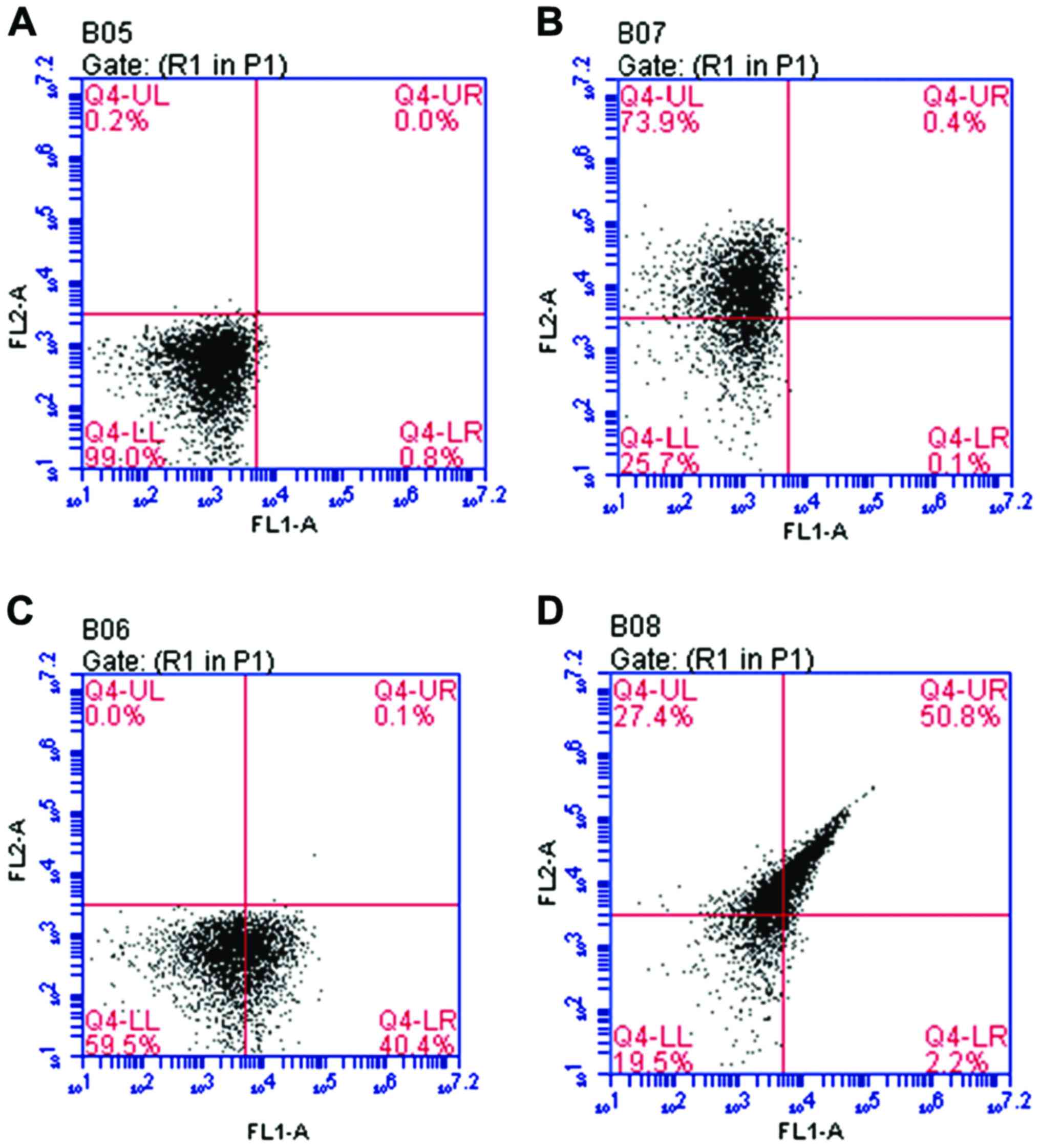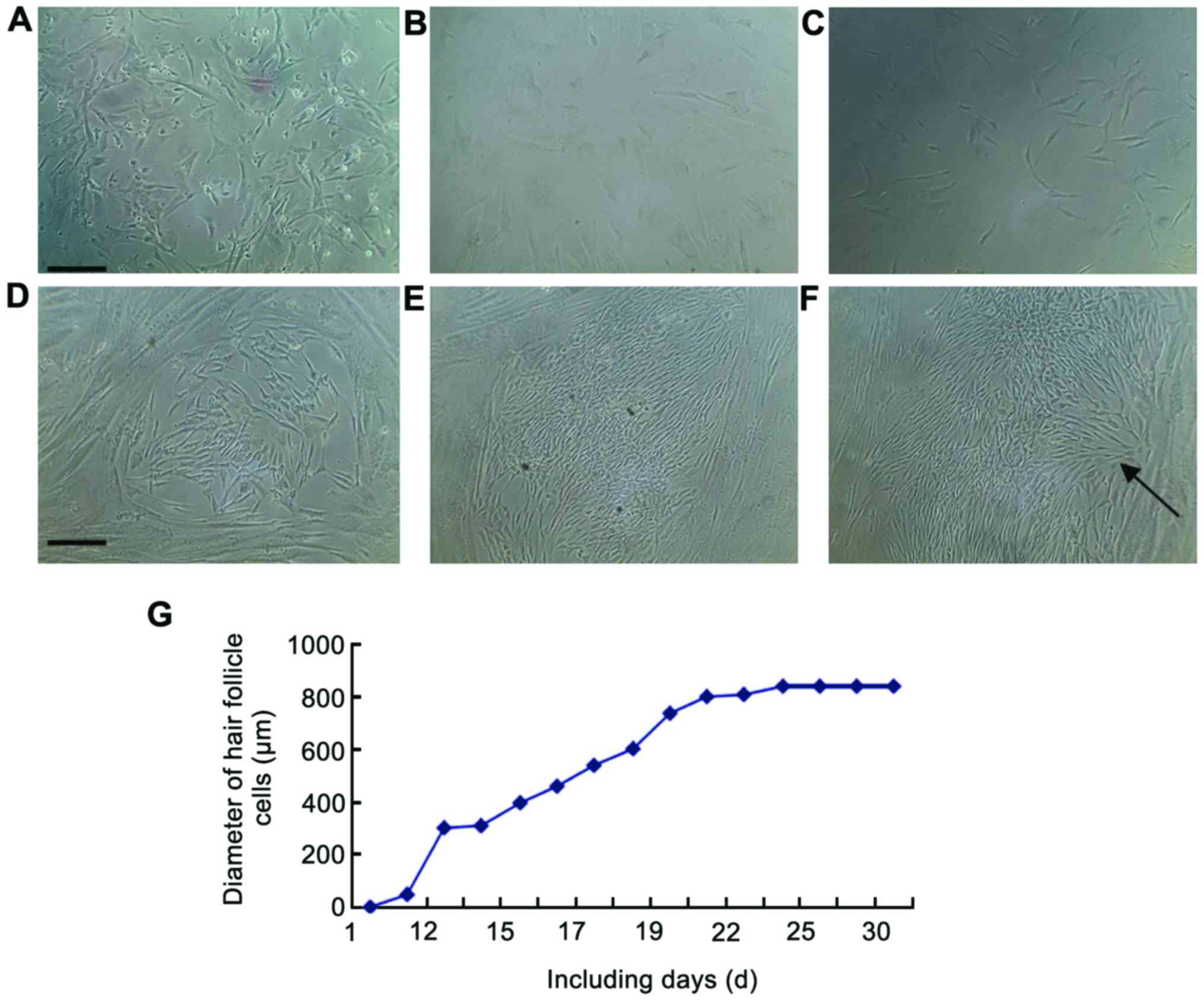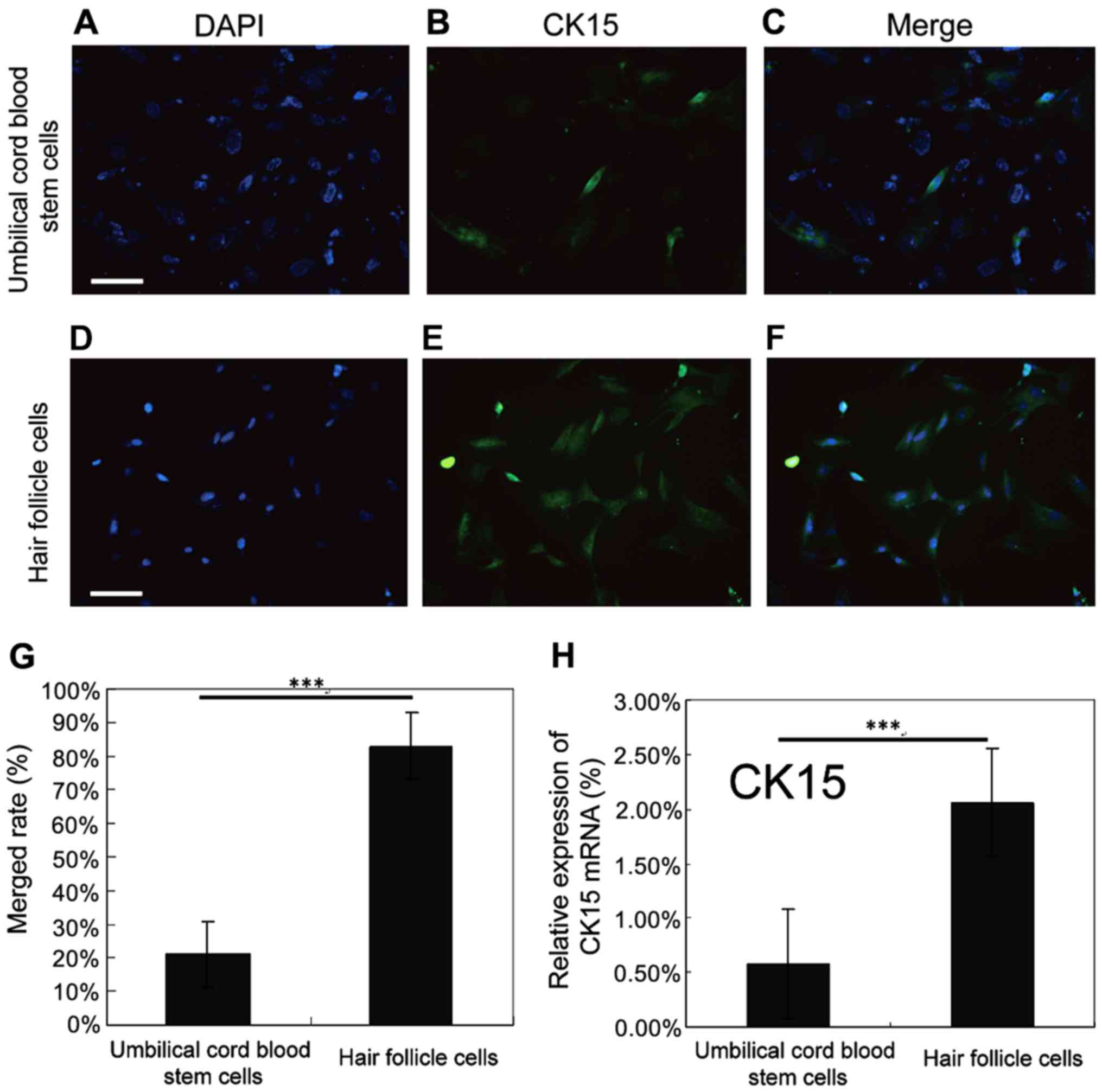|
1
|
Codinach M, Blanco M, Ortega I, Lloret M,
Reales L, Coca MI, Torrents S, Doral M, Oliver-Vila I,
Requena-Montero M, et al: Design and validation of a consistent and
reproducible manufacture process for the production of
clinical-grade bone marrow-derived multipotent mesenchymal stromal
cells. Cytotherapy. 18:1197–1208. 2016. View Article : Google Scholar : PubMed/NCBI
|
|
2
|
Kumar K, Agarwal P, Das K, Mili B,
Madhusoodan AP, Kumar A and Bag S: Isolation and characterization
of mesenchymal stem cells from caprine umbilical cord tissue
matrix. Tissue Cell. 48:653–658. 2016. View Article : Google Scholar : PubMed/NCBI
|
|
3
|
Del Valle-Echevarria AR, Sanseverino W,
Garcia-Mas J and Havey MJ: Pentatricopeptide repeat 336 as the
candidate gene for paternal sorting of mitochondria (Psm) in
cucumber. Theor Appl Genet. 129:1951–1959. 2016. View Article : Google Scholar : PubMed/NCBI
|
|
4
|
de Moor JS, Dowling EC, Ekwueme DU, Guy GP
Jr, Rodriguez J, Virgo KS, Han X, Kent EE, Li C, Litzelman K, et
al: Employment implications of informal cancer caregiving. J Cancer
Surviv. 11:48–57. 2017. View Article : Google Scholar : PubMed/NCBI
|
|
5
|
Sigurjónsson OE, Guðmundsson KO and
Guðmundsson S: Mesenchymal stem cells. A review. Laeknabladid.
87:627–632. 2001.(In Icelandic). PubMed/NCBI
|
|
6
|
Maranda EL, Rodriguez-Menocal L and
Badiavas EV: Role of mesenchymal stem cells in dermal repair in
burns and diabetic wounds. Curr Stem Cell Res Ther. 12:61–70. 2017.
View Article : Google Scholar : PubMed/NCBI
|
|
7
|
Astori G, Amati E, Bambi F, Bernardi M,
Chieregato K, Schäfer R, Sella S and Rodeghiero F: Platelet lysate
as a substitute for animal serum for the ex-vivo expansion of
mesenchymal stem/stromal cells: Present and future. Stem Cell Res
Ther. 7:93–100. 2016. View Article : Google Scholar : PubMed/NCBI
|
|
8
|
Dyrna F, Herbst E, Hoberman A, Imhoff AB
and Schmitt A: Stem cell procedures in arthroscopic surgery. Eur J
Med Res. 21:29–36. 2016. View Article : Google Scholar : PubMed/NCBI
|
|
9
|
Jiang LH, Hao Y, Mousawi F, Peng H and
Yang X: Expression of P2 purinergic receptors in mesenchymal stem
cells and their roles in extracellular nucleotide regulation of
cell functions. J Cell Physiol. 232:287–297. 2017. View Article : Google Scholar : PubMed/NCBI
|
|
10
|
Morris AD, Chen J, Lau E and Poh J:
Domperidone-associated QT interval prolongation in non-oncologic
pediatric patients: A review of the literature. Can J Hosp Pharm.
69:224–230. 2016.PubMed/NCBI
|
|
11
|
Kavosi Z, Khorrami M Sarikhani, Keshavarz
K, Jafari A, Meshkini A Hashemi, Safaei HR and Nikfar S: Is
taurolidine-citrate an effective and cost-effective hemodialysis
catheter lock solution? A systematic review and cost-effectiveness
analysis. Med J Islam Repub Iran. 30:347–358. 2016.PubMed/NCBI
|
|
12
|
Shi X, Lv S, He X, Liu X, Sun M, Li M, Chi
G and Li Y: Differentiation of hepatocytes from induced pluripotent
stem cells derived from human hair follicle mesenchymal stem cells.
Cell Tissue Res. 366:89–99. 2016. View Article : Google Scholar : PubMed/NCBI
|
|
13
|
Maruyama CL, Leigh NJ, Nelson JW, McCall
AD, Mellas RE, Lei P, Andreadis ST and Baker OJ: Stem cell-soluble
signals enhance multilumen formation in SMG cell clusters. J Dent
Res. 94:1610–1617. 2015. View Article : Google Scholar : PubMed/NCBI
|
|
14
|
Son S, Liang MS, Lei P, Xue X, Furlani EP
and Andreadis ST: Magnetofection mediated transient NANOG
overexpression enhances proliferation and myogenic differentiation
of human hair follicle derived mesenchymal stem cells. Bioconjug
Chem. 26:1314–1327. 2015. View Article : Google Scholar : PubMed/NCBI
|
|
15
|
Maleki M, Ghanbarvand F, Behvarz M Reza,
Ejtemaei M and Ghadirkhomi E: Comparison of mesenchymal stem cell
markers in multiple human adult stem cells. Int J Stem Cells.
7:118–126. 2014. View Article : Google Scholar : PubMed/NCBI
|
|
16
|
Dong L, Hao H, Xia L, Liu J, Ti D, Tong C,
Hou Q, Han Q, Zhao Y, Liu H, et al: Treatment of MSCs with
Wnt1a-conditioned medium activates DP cells and promotes hair
follicle regrowth. Sci Rep. 4:5432–5440. 2014. View Article : Google Scholar : PubMed/NCBI
|
|
17
|
Wu M, Guo X, Yang L, Wang Y, Tang Y, Yang
Y and Liu H: Mesenchymal stem cells with modification of junctional
adhesion molecule a induce hair formation. Stem Cells Transl Med.
3:481–488. 2014. View Article : Google Scholar : PubMed/NCBI
|
|
18
|
Wang Y, Liu J, Tan X, Li G, Gao Y, Liu X,
Zhang L and Li Y: Induced pluripotent stem cells from human hair
follicle mesenchymal stem cells. Stem Cell Rev. 9:451–460. 2013.
View Article : Google Scholar : PubMed/NCBI
|
|
19
|
Gola M, Czajkowski R, Bajek A, Dura A and
Drewa T: Melanocyte stem cells: Biology and current aspects. Med
Sci Monit. 18:RA155–RA159. 2012. View Article : Google Scholar : PubMed/NCBI
|
|
20
|
DiDomenico L, Landsman AR, Emch KJ and
Landsman A: A prospective comparison of diabetic foot ulcers
treated with either a cryopreserved skin allograft or a
bioengineered skin substitute. Wounds. 23:184–189. 2011.PubMed/NCBI
|
|
21
|
Liang MS and Andreadis ST: Engineering
fibrin-binding TGF-β1 for sustained signaling and contractile
function of MSC based vascular constructs. Biomaterials.
32:8684–8693. 2011. View Article : Google Scholar : PubMed/NCBI
|

















